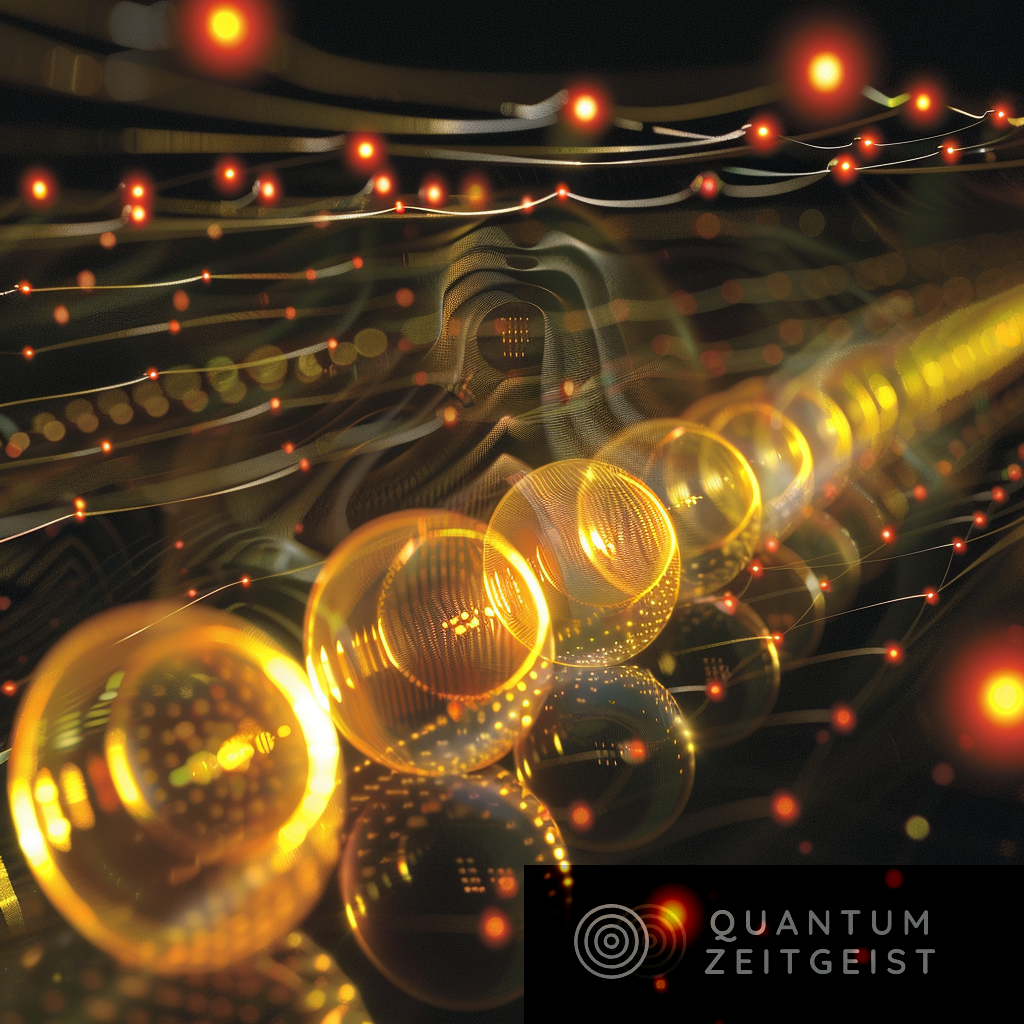The Google Quantum AI experiment, led by Federica Maria Surace and Olexei Motrunich from the California Institute of Technology, has made significant progress in understanding quantum many-body systems. The experiment used superconducting circuits hosting microwave photons, demonstrating the existence of bound states of up to five photons. The findings challenge existing theories of ergodic dynamics in nonintegrable systems, as the bound states persisted even after many cycles of the circuits, despite large perturbations. These results have implications for our understanding of quantum many-body dynamics and have opened up new avenues for research in quantum physics.
What is the Significance of the Google Quantum AI Experiment?
The Google Quantum AI experiment, conducted by Federica Maria Surace and Olexei Motrunich from the Department of Physics and Institute for Quantum Information and Matter at the California Institute of Technology, has made significant strides in the field of quantum physics. The experiment, which involved the use of superconducting circuits hosting microwave photons, has shed light on the dynamics of quantum many-body systems. The photons in the experiment were able to hop between neighboring sites of a chain and interact with each other, a process described by an integrable quantum circuit.
The experiment demonstrated the existence of bound states of up to five photons. These bound states, which are exact eigenstates of the model predicted by the Bethe ansatz, form a single collective excitation when the photons are nearly adjacent. The bound states were observed to be enclosed in the continuous spectrum of multiparticle states, i.e., eigenstates of mostly distant photons that can scatter off each other. Despite the absence of a gap, the conservation laws of the integrable model protect the bound states from mixing with the underlying continuum.
How Did the Experiment Challenge Existing Theories?
The Google Quantum AI experiment challenged existing theories and expectations of ergodic dynamics in generic nonintegrable systems. The integrable circuit used in the experiment was perturbed by coupling every other site of the chain with additional sites, thus breaking the integrability of the model. In the absence of any conservation laws that protect them, the exact bound states of the unperturbed model were expected to quickly decay in the continuum of multiparticle states. However, the experiment showed the persistence of the bound states after many cycles of the circuits, even for fairly large values of the perturbation.
This observation is at odds with the expectation of ergodic dynamics in generic nonintegrable systems. The origin of this robustness cannot be easily attributed to any known mechanism for slow relaxation. The usual quantum many-body scarring mechanisms were not expected to be operative in the systems with O(1) integrability breaking, and there was no evidence of even more dramatic Hilbert-space fragmentation phenomena.
What are the Implications of the Experiment’s Findings?
The findings of the Google Quantum AI experiment have significant implications for our understanding of quantum many-body dynamics. The persistence of bound states in the face of perturbations challenges existing theories and opens up new avenues for research. The experiment has sparked considerable interest in the theoretical investigation of the approach to thermal equilibrium in isolated quantum many-body systems.
The experiment has also inspired the search for unusual behaviors where a system does not reach thermal equilibrium. Examples of such exotic dynamical phenomena that have been observed in quantum simulators include quantum many-body scarring, Hilbert space fragmentation, dynamical phase transitions, time crystals, and noise-resilient edge modes.
What are the Future Directions for Research?
The Google Quantum AI experiment has opened up new directions for research in quantum physics. The robustness and eventual slow decay of bound states of interacting microwave photons observed in the experiment need to be further investigated. The spectrum of the model realized in the experiment, studied using exact diagonalization and physical arguments, revealed isolated bands corresponding to the descendants of the exact bound states of the integrable model. However, the numerical analysis of the localization properties of the eigenstates suggests that the bound states become unstable in the thermodynamic limit.
Future research needs to focus on developing a theoretical framework that can explain and predict such phenomena. The perturbative estimate of the decay rate agrees with the prediction of an eventual instability for large system sizes. This suggests that further studies are needed to understand the conditions under which quantum many-body scars occur and to elucidate the mechanisms behind the observed robustness of the bound states.
Publication details: “Robustness and Eventual Slow Decay of Bound States of Interacting Microwave Photons in the Google Quantum AI Experiment”
Publication Date: 2024-02-05
Authors: Federica Maria Surace and Olexei Motrunich
Source: PRX Quantum 5, 010317
DOI: https://doi.org/10.1103/PRXQuantum.5.010317

